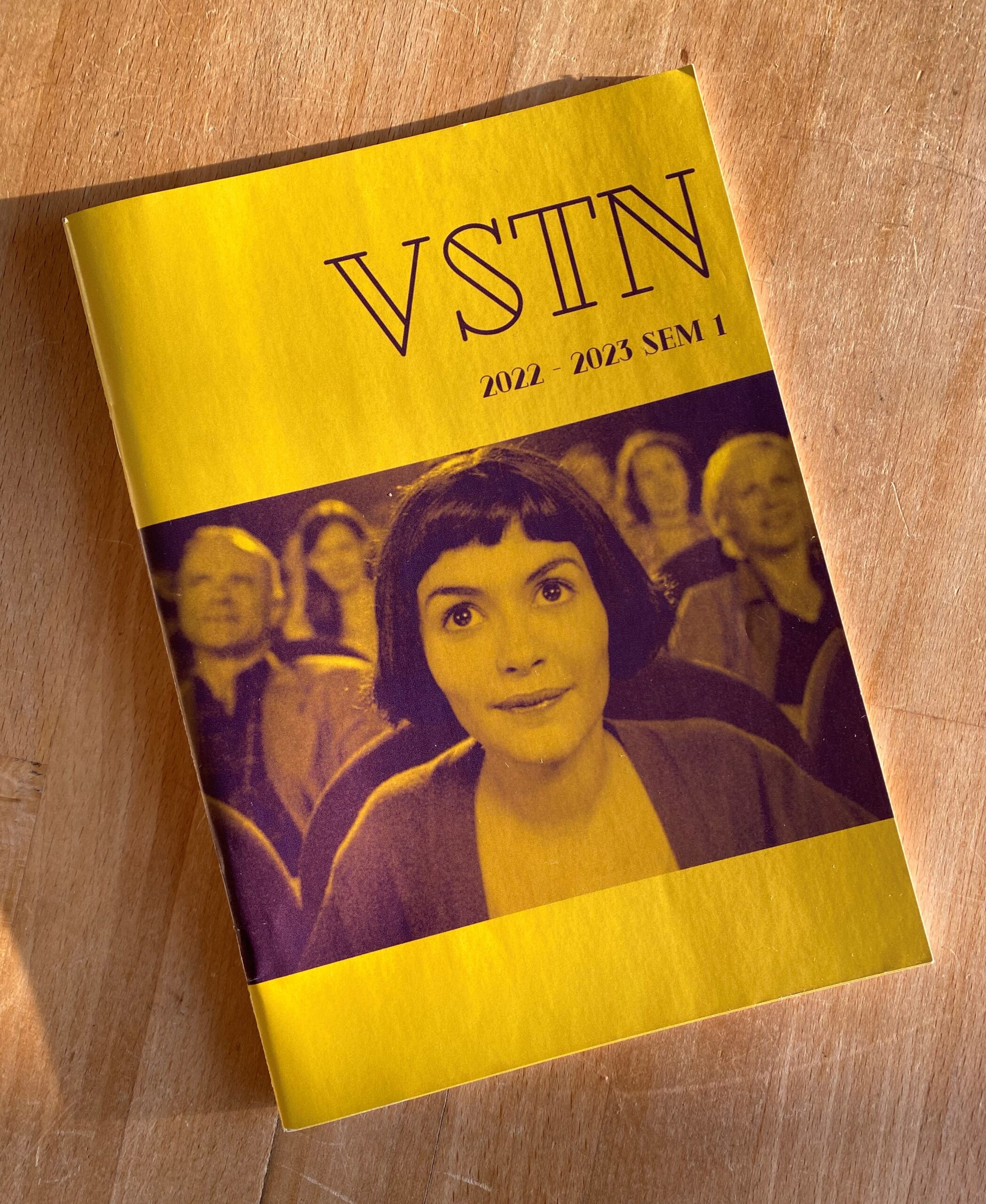- 4 juni 2023 -
Woord en wederwoord :The act of reminiscing – thoughts on A Well for the Thirsty
VSTN  (*)
(*)
“Works of art that can accompany you through the decades are mirrors in which you can see yourself, wells in which you can keep dipping. They remind you that it’s as much what you bring to the work of art as what it brings to you that matters, and they become registers of how you’ve changed”
- Rebecca Solnit, The mother of all questions
For a while I thought my perennial romanticizing murdered true experience. Now I believe it’s the other way around: it brings true experience to life. What’s normal should be magnified. Films are especially fit for this task; aestheticizing the everyday. To make the past into a storyline because there’s nothing else to do. A friend said that you shouldn’t do that with the present, though: it’s exhausting. I agree with the latter; it’s tiring. However, I think the present doesn’t leave us much else than to reminisce, to turn into stories, to fictionalize, to glorify. I think that’s why melancholy feels cinematic and why every memory is in fact a dream-sequence. “They become registers of how you’ve changed”.
I watched Yuri Illienko’s “A Well for the Thirsty” for the first time in a Finnish cinema, only realizing after the film had started that there were no English subtitles. It turned out to be a very happy accident. A Well felt like a non-verbal conversation. Something I could participate in regardless of the words. The stinging pain of reminiscing spoke for itself.
“A well for the thirsty” tells the story of an old man named Levko who lives in a desolate desert village in Ukraine. There, he takes care of a well that used to provide his family and neighbours with water. It has now become unused, filled with sand. His children have long left the village. To force them to come back, Levko sends out a letter saying he’s dying. When a WWII remembrance statue is delivered in a wooden box, he uses the wood to build himself a coffin.
A Well for the Thirsty is about unhappiness, loneliness, nostalgia, melancholia, hopelessness, and despair. . It’s about dealing with the past in the present while looking towards a future that seems bleak. Levko turns the pictures of his children towards the wall. Levko doesn’t work the land like he used to. The sand slips through his fingers, just like past and present life slip through them. Levko makes himself a coffin. He fixes up the well. He tries to forget by looking at old drawings.
In the act of reminiscing, you draw the past into the present. And you can’t help but romanticize. To turn the past into stories, songs, poems. The interesting thing about the poetic school of Ukraine in the 60s is how it redefines poetry to include film as well. Part of the reason why this poetic approach appealed to Yuri Illienko is that it’s in many ways a convenient medium. In poetry, the message is implicit instead of explicit, which was a big strength in the Soviet regime, where there was little place for (artistic) criticism against the status quo.
What happens when we see a movie as a poem in itself? What language does it speak? A well for the Thirsty has special words for the weird feelings of nostalgia mixed with pain and laughter that come with growing up and growing old. The act of remembering is captures throughout time. We’re living in our memories. The only way to catch a moment is to fictionalize it. It’s where my obsession with documentation comes from: picture or it didn’t happen. The same goes for Levko: he’s thinking of his wife, of how the well used to quench the villagers’ thirst, about his children and their little voices, about the war and about the losses he suffered. The well is like the mirror he sees himself in, in which he keeps dipping steadily, incessantly, obsessively, until it brings the present back to life.
Cato Andriessen
*******
(*) VSTN staat voor Van Stof Tot Nadenken. VSTN is een studentenblad met een hart voor filosofie, het blad van de Kring Moraal en filosofie aan de UGent. VSTN verschijnt tweemaal per jaar. In dit tijdschrift gaan Gentse studenten (moraal-)filosofie vanuit hun leerstof verder denken. Ter illustratie van het feit dat filosoferen zelfs boeiend, leuk en wijs kan zijn buiten de lesuren. Wil je nog meer weten dan kan je een kijkje nemen op hun Facebook-pagina.
VSTN 2022 – 2023 SEM 1 is internationaal tot stand gekomen: “overheen drie tijdzones werd noestig gecorrespondeerd over het boekje” want de driekoppige redactie bestaande uit “Benjamin bevond zich in Engeland, Eline in België en Cato in Finland.” En wat de inhoud betreft: “De overpeinzingen, gedichten en tekeningen van dit semester raken weer vele onderwerpen. Maar, film slaat de grote klok…“
Cato Andriessen is ’n wijze meid, waarmee het boeiend filosoferen is, bij voorkeur met een kop koffie of een glas cava in de hand en liefst op een warmmenselijke plek. Een intergenerationeel geluk dat mij al enkele malen ten deel is gevallen. Aangesproken door haar artikel in VSTN kroop ik in mijn pen, met als resultaat dat ik hier haar artikel overneem en VSTN 2022 – 2023 SEM 2 mijn wederwoord.
Zoek naar:
Recent
- Witte zorg, zwart leed. 17/12/2025
- Kleurdoos 07/12/2025
- Breuk in de horizon 18/11/2025
- Kimia, in het hart van Congo 20/10/2025
- Hallo witte mensen 20/09/2025
- Lumumba’s droom 21/08/2025
- Trofee / Het geschenk 19/08/2025
Labels
- Bedrijvige verhalen (3)
- Dagschotel (219)
- De zeven seizoenen (100)
- Gentse galanterieën (70)
- Kinderkamer (48)
- Kortverhaal (17)
- Liefhebberij (84)
- Palmsteken en parabels (39)
- Recensie (36)
- Woord en wederwoord (2)
- Woordspelig schrijfwerk (36)
- Zwartwit (6)
